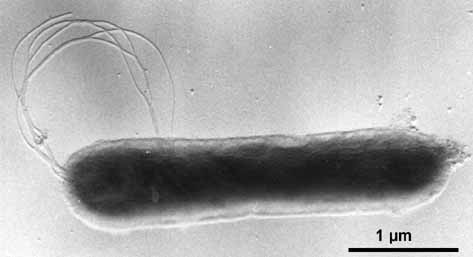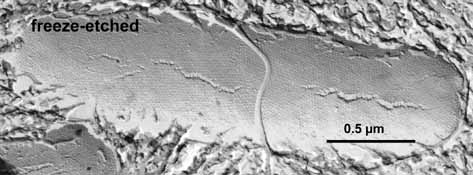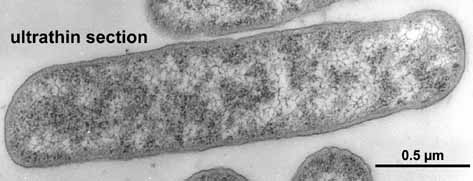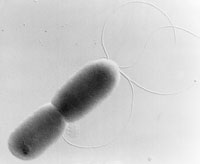Aquifex: Difference between revisions
No edit summary |
No edit summary |
||
| Line 44: | Line 44: | ||
''[http://www.nature.com/genomics/papers/a_aeolicus.html Aquifex aeolicus]''. © K.O. Stetter & Reinhard Rachel, University of Regensburg. | ''[http://www.nature.com/genomics/papers/a_aeolicus.html Aquifex aeolicus]''. © K.O. Stetter & Reinhard Rachel, University of Regensburg. | ||
[[Image:upstream%20of%20aquifex%20environment.jpg]] | [[Image:upstream%20of%20aquifex%20environment.jpg]] | ||
A hot spring at Octopus Spring. From the [http://www.lpi.usra.edu/education/EPO/yellowstone2002/workshop/octopus1/index.html#aquifex Lunar and Planetary Institute]. | A hot spring at Octopus Spring. From the [http://www.lpi.usra.edu/education/EPO/yellowstone2002/workshop/octopus1/index.html#aquifex Lunar and Planetary Institute]. | ||
[[Image:aquifex_environment.jpg]] | [[Image:aquifex_environment.jpg]] | ||
Revision as of 20:09, 31 May 2006
Classification
Higher order taxa:
Bacteria; Aquificae; Aquificae (class); Aquificales; Aquificaceae; Aquifex
Species:
Aquifex aeolicus, Aquifex pyrophilus, Aquifex sp.
Description and Significance
Deep-branching bacteria of the genus Aquifex, such as Aquifex pyrophilus and Aquifex aeolicus, can grow at 95 degrees C; they are among the most extreme thermophilic bacteria known. A. aeolicus was first obtained by R. Huber and K.O. Stetter at
the Aeolic Islands (north of Sicily, Italy), whereas A. pyrophilus was obtained at the Kolbensey Ridge, North of Iceland..
Because of this, Aquifex is thought to be one of the earliest bacteria to diverge from eubacteria. Hyperthermophilic bacteria such as Aquifex are important for industrial processes and its genes can be used in a variety of biotechnological applications.
Genome Structure
Even though Aquifex has the ability to survive at extreme temperatures, there are only a few specific heat-resistance indicators evident in the A. aeolicusgenome. The genome, which is 1,551,335 bp in length, is densely packed and contains genes that overlap others. In addition, no introns or protein splicing elements have been found.. This, along with a reduced metabolic flexability, is probably due to the limited genome size; the genome of this complex organism is ony one-third of the E. coli genome. The calculated sequence redundancy for the A. aeolicus genome is 4.83 (Deckert et al. 1998). Comparison of the Aquifex genome to other organisms showed that 16% of it genes originated from archaea bacteria. Visit TIGR for more information on the genome and chromosomal structure of A. aeolicus VF5.
Cell Structure and Metabolism
Aquifex are nonsporeforming, gram-negative, generally rod-shaped organisms. They are about 2.0-6.0 micrometers in length and have a diameter of 0.4-0.5 micrometers. As autotrophic organisms, Aquifex fix carbon dioxide from the environment to get the carbon that they need. They are chemolithotrophic, which means that they draw energy for biosynthesis from inorganic chemical sources. The enzymes this organism uses for aerobic respiration are similar to the enzymes found in other aerobic bacteria (Deckert et al. 1998). A. aeolicus requires oxygen from the air as an electron acceptor to oxidize hydrogen gas (Prokaryotes):
2 H2 + O2 → 2 H2O
Aquifex, meaning "water-maker," got its name because the the final product of this reaction is water. Even so, most Aquificales can use thiosulfate or sulfur as an energy source (much like chlorobium and other green sulfur bacteria) and produce sulfuric acid and H2S instead of water. Although most Aquifcales are strictly aerobic, A. pyrophilus was shown to be able to grow anaerobically by reducing nitrogen instead of oxygen (forming an end product of N2 instead of water). For more information and diagrams of known A. aeolicus metabolic pathways, visit Systems Biology Inc.
One recent study has found that Non-N-methylated APT lipids can be observed as a common phospholipid headgroup in Aquifex. The study concluded that "this apparent evidence for a more widespread presence of the APT headgroup among the deeply branching bacteria provideshurther evidence that certain deeply branching bacteria share structural features other than the well-described presence of ether-bound alkyl chains withthe archaeal domain."
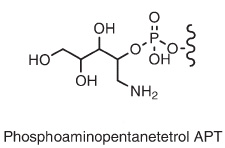
Ecology
As a hyperthermophilic bactertium, Aquifex aeolicus grows in extremely hot tempuratures such as near volcanoes or hot springs. They grow optimally at temperatures around 85 degrees but can grow at temperatures up to 95 degrees. It needs oxygen to carry on its metabolic machinery, but it can function in relatively low levels of oxygen (A. pyrophilus can grow in levels of oxygen as low as 7.5 ppm). A. aeolicus can grow on hydrogen, oxygen, carbon dioxide, and mineral salts (Deckert et al. 1998). Aquifex species generally form large cell aggregates, which can be comprised of up to 100 individual cells.
Aquifex aeolicus. © K.O. Stetter & Reinhard Rachel, University of Regensburg.

A hot spring at Octopus Spring. From the Lunar and Planetary Institute.
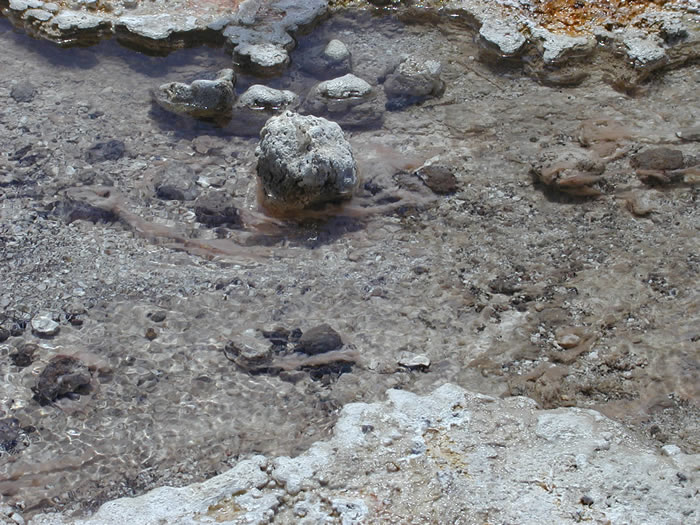
Approximately 2 meters downstream of the spring pictured to the right. Pink microbial filaments containing Aquifex and Thermotoga were found in this channel. The tempurature was measured to be 83 degrees Celsius and the pH was found to be 8. From the Lunar and Planetary Institute. |}
References Updated May 31, 2006
Prescott, Harley, Klein. 21 Bacteria: The Deinococci and Nonproteobacteria: Gram-Negatives. McGraw Hill Higher Education.
